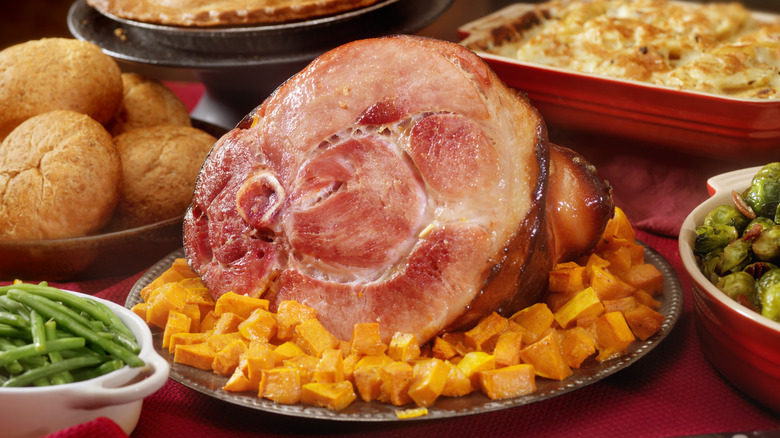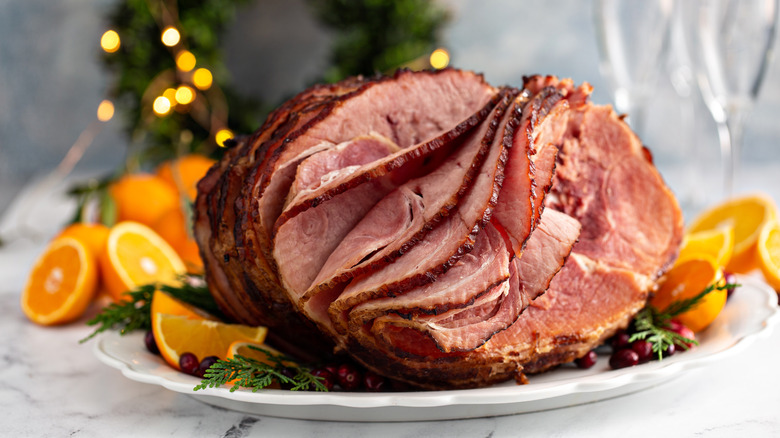How Long It Takes To Cook Bone-In Ham
Whether you're prepping for a holiday get-together or looking to make a nice family meal, a bone-in ham can elevate your cooking repertoire. But before you get started, you should know that cooking ham bone-in has different requirements compared to cooking ham with no bones. That, along with a few other important details, is going to change your cooking time.
With smoked, uncooked bone-in half ham, according to the U.S. Department of Agriculture (USDA), you want to set your timer for 22 to 25 minutes per pound and cook your meat at 325 degrees Fahrenheit. With a whole ham of the same type, cook it for 18 to 20 minutes per pound at the same temperature. You'll need to have an accurate measurement of the weight to properly calculate this. A half ham that's pre-cooked will need 18 to 24 minutes per pound. Although it's pre-cooked, you will still want to heat it. A whole ham that's pre-cooked will only need 15 to 18 minutes per pound. And finally, we have the fresh uncooked ham. A half ham of this variety will need a full 35 to 40 minutes per pound while a whole ham will need 22 to 26 minutes per pound.
The aim in any situation is to get the internal temperature of your ham to 145 degrees Fahrenheit for the uncooked hams and at least 140 degrees Fahrenheit for pre-cooked hams, per USDA. This will ensure your ham is safe to eat.
Sorting out the details
If you're having trouble figuring out which one applies, you'll want to first identify if you have a whole ham or a half ham. With bone-in hams, a half ham typically weighs between five to 10 pounds and a whole ham comes in around 10 to 20 pounds. In addition, there are three different types of bone-in ham you should be aware of: smoked and uncooked, smoked and cooked, and fresh uncooked ham.
You will often be lucky enough to get the weight measurement right on the packaging. Most meat is sold at a price by the pound so somewhere on the packaging should display what that price is alongside a precise weight measurement. If you're unsure where to look, find the price tag or sticker to start. If it's not there, you'll need to get the weight another way. If you don't have a food scale, try using a bathroom scale. Stand on it, take your measurements, then stand on it again while holding the ham. The difference in weight is the weight of the ham.

